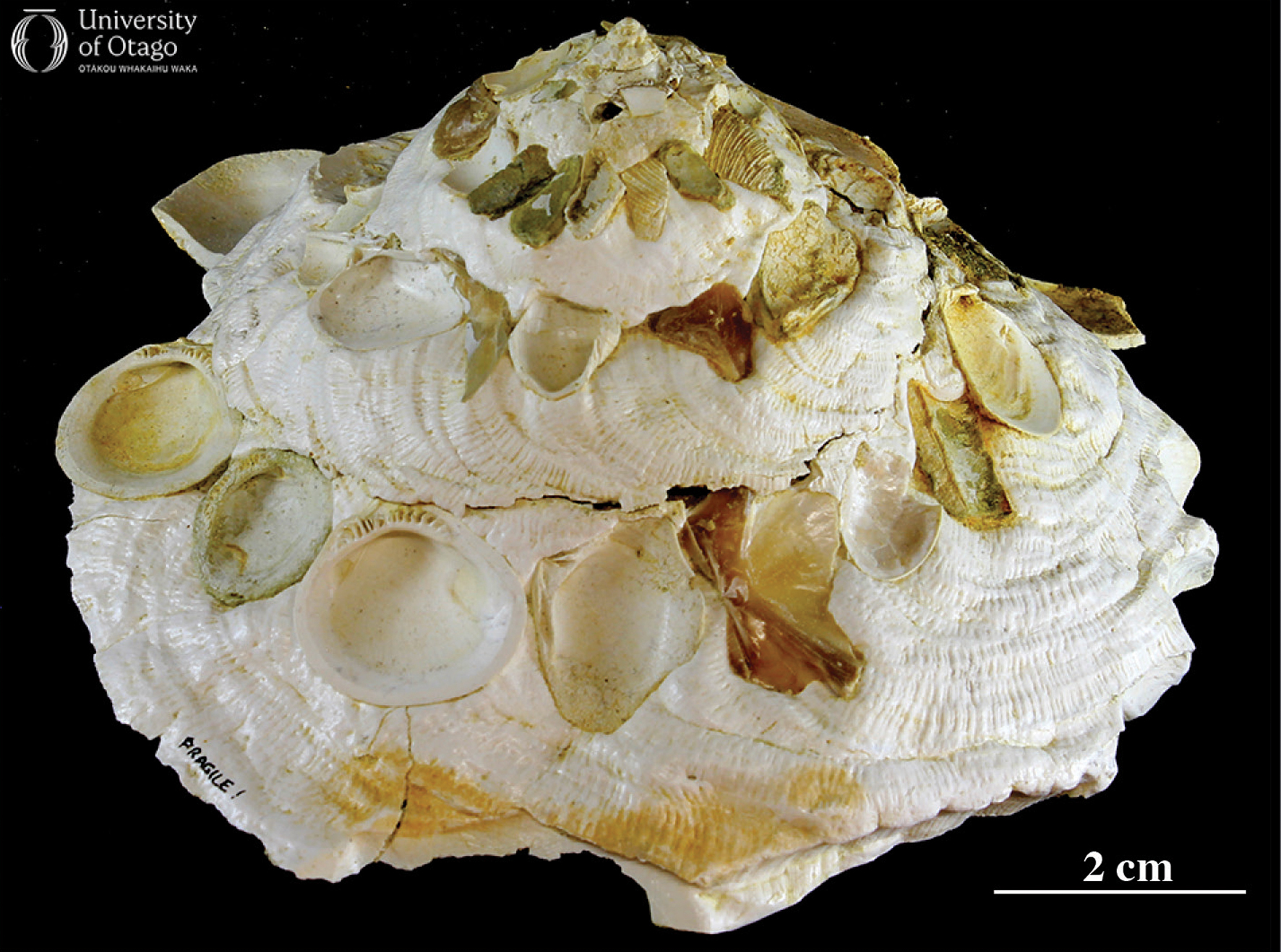42 Carrier shells are snapshots of the sea floor community
Mollusca, Gastropoda: Xenophora sp.
The Geology Museum has many fossil specimens of the carrier shell, Xenophora in its collections. The example illustrated here comes from the sandy limestone in South Canterbury which is described in the chapter Smooth scallop from the ancient Southern Ocean sea floor.

An example of a fossil carrier shell from the sandy limestone in the Hakataramea Valley, South Canterbury. Note the shell debris and concave-up bivalve shells that increase in size as the fragile shell grows. Image credit: JH Robinson. |
These well-named marine gastropods camouflage themselves by cementing other mollusc shells, small pebbles or other debris to their shell as they grow. These shell ‘decorations’ serve several functions: as well as helping the animal avoid potential predators, they add strength and lift the animal higher above the substrate to avoid smothering in the soft sediment on/in which these deposit feeders lived.
The decorations which often include concave-up bivalve shells are small at the top, and become larger as the shell grows.
A species of Xenophora is found in seas around New Zealand today at depths of 10 to 150 metres. The animals move in jerky leaps across the soft seabed and then stay still, looking to any potential predators like a small heap of shell gravel. They are deposit feeders, sifting through the surface layer of muddy silt to take in diatoms and other microscopic organic material. They give us a picture of the dynamic sea floor that was once occupied by fossil Xenophora in a region of South Canterbury and North Otago that is now several hundred metres above sea level.
—Written by Daphne E Lee
| Specimen number: OU 43374 | Age of specimen: Approximately 26 million years old (late Oligocene, Duntroonian stage) |
| Locality: Hakataramea Valley, South Canterbury | Rock Formation: Otekaike Limestone |
| Collected by: A Grebneff | |
| Citation: Beu AG. 1977. New Zealand Cenozoic gastropods of the genus Xenophora Fischer, 1807. Journal of the Royal Society of New Zealand 7:229–241. doi.org/10.1080/03036758.1977.10427161 | |
Coarse-grained, sandy limestone.

